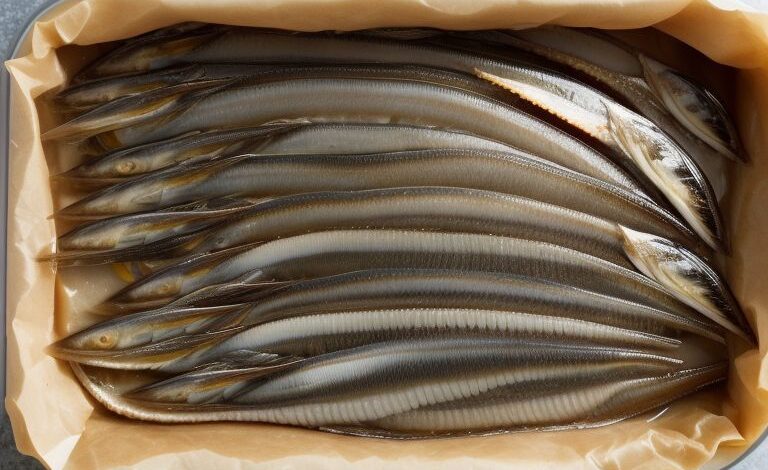How Anchovies Are Typically Preserved: A Deep Dive into Their Preservation Process

How anchovies are typically preserved is an interesting and important question, especially if you’re a fan of this popular seafood. These tiny fish are packed with flavor, but preserving them properly is key to maintaining their taste and texture. The preservation process has been practiced for centuries, and it’s a delicate art that involves techniques such as salting, drying, and sometimes even fermenting.
Anchovies are typically preserved through methods that prevent spoilage and help retain their unique umami flavor. Most commonly, you’ll find anchovies preserved in salt, which helps to keep them fresh for longer periods. But did you know that there are also other ways anchovies are preserved that you might not be familiar with? In this article, we will explore how anchovies are typically preserved and what makes each method special.
Table of Contents
How Anchovies Are Typically Preserved: An Overview of Time-Tested Methods

When it comes to anchovies, preserving them correctly is key to keeping their delicious flavor intact. You might wonder, how anchovies are typically preserved? Well, there are a few classic methods that have been used for centuries. The most common ones are salting, drying, and even canning. These methods prevent spoilage and help maintain the rich umami taste that anchovies are known for.
Salting anchovies is the most popular method. The fish are packed in salt, which helps draw out moisture, preventing bacteria from growing. This method allows anchovies to stay fresh for longer. But in some cases, they are also packed in oil or vinegar to preserve them in a slightly different way. Each method adds its own special twist to the flavor and texture of the anchovies.
Salted vs. Oiled: How Anchovies Are Typically Preserved in Different Cultures
Different cultures have their own unique ways of preserving anchovies. In many Mediterranean countries, salt is the key ingredient. How anchovies are typically preserved in this region usually involves heavily salting the fish. The salted anchovies are then stored in barrels or jars, where they continue to age and deepen in flavor. This traditional technique gives anchovies a bold, salty taste that pairs wonderfully with pasta and salads.
In other areas, such as Asia, anchovies are often preserved in oil or vinegar. The oily preservation method helps keep the fish moist and tender, while also enhancing the natural flavor. Anchovies stored in oil are often softer, making them ideal for spreading on bread or mixing into sauces. This contrast between salted and oiled anchovies shows how preservation methods can vary across cultures while still preserving the fish’s unique taste.
The Secret Behind Preserving Anchovies: Why Salt Is the Most Common Method
Salt has been used for centuries as a preservative. How anchovies are typically preserved using salt is simple but highly effective. Salt helps draw out the moisture from the fish, which creates an environment that bacteria and other microorganisms can’t survive in. This not only prevents the anchovies from spoiling but also intensifies their flavor. The more salt that’s used, the more the anchovies will mature and develop a deeper taste.
This preservation method is not only easy and affordable, but it also creates anchovies that have a rich, bold flavor. Salted anchovies can last for months without refrigeration, making them perfect for long-term storage. For many people, the salty anchovies are a must-have in their kitchen, as they bring a punch of flavor to a wide range of dishes.
How Anchovies Are Typically Preserved: The Step-by-Step Process You Should Know
Understanding how anchovies are typically preserved involves knowing the process. The first step usually starts with the catch. Fresh anchovies are carefully cleaned and gutted. After that, they are either salted or packed in oil, depending on the method chosen. If salt is used, the anchovies are layered with salt and left to cure for several days. During this time, they release moisture and absorb the salt, ensuring they are preserved properly.
Once the anchovies have cured, they are either packed in more salt or moved to oil. In some cases, they may also be stored in vinegar. The final step is to seal the anchovies in jars or cans, ready for distribution. It’s important that each step is followed carefully to ensure the preservation process is done correctly, as any mistake could affect the flavor or shelf life of the anchovies.
From Sea to Shelf: How Anchovies Are Typically Preserved and Stored for Maximum Flavor

When anchovies are preserved, it’s not just about the method, but also how they’re stored. How anchovies are typically preserved and stored is essential to their final flavor. After being salted or packed in oil, the anchovies are placed in sealed jars or cans. The packaging helps prevent contamination, and the storage conditions play a role in how the anchovies mature. Cool, dry places are ideal, as heat or moisture can affect their flavor.
In modern times, many anchovies are stored in sealed cans for convenience. This method helps protect the fish from light and air, which could cause them to spoil faster. For those who want to enjoy fresh anchovies, they can also be found in the refrigerated section of stores. These anchovies are typically packed in oil and kept at the right temperature to maintain their taste and texture.
How Anchovies Are Typically Preserved in Cans and Jars: A Modern Approach
Canning and jar storage are two modern methods that have become popular for anchovy preservation. When how anchovies are typically preserved involves these methods, the process becomes more efficient and accessible. Canned anchovies are sealed tightly, which helps them last for a long time without needing refrigeration. This method keeps the anchovies in their preserved state, allowing you to enjoy them whenever you want.
Anchovies in jars are similar but are often found in oil or vinegar. The sealed jar helps keep out air and moisture, ensuring the fish stay fresh. This preservation method is convenient for those who enjoy using anchovies as a topping or ingredient in their meals. Both cans and jars offer easy storage and ensure that the anchovies stay fresh until you’re ready to use them.
By following these methods, anchovies are preserved in ways that keep their rich, savory flavor intact. Whether you prefer them salted, oiled, or packed in jars, understanding how anchovies are typically preserved can help you appreciate this delicacy even more. Each preservation technique has its own advantages, and they all work together to make anchovies a staple in many kitchens around the world.
How to Choose the Best Anchovies for Your Meals

Choosing the right anchovies for your meal depends on the dish you’re making and your taste preferences. If you prefer a bold, salty kick, salted anchovies are the way to go. They work great in pasta dishes, salads, and pizzas, adding a deep, savory flavor. On the other hand, if you want a milder taste with a smooth texture, oil-packed anchovies are a perfect choice. They’re ideal for spreading on bread, mixing into sauces, or using as a topping for crackers. When selecting anchovies, make sure to check the packaging for freshness and the preservation method to get the best quality for your cooking!
Conclusion:
In conclusion, how anchovies are typically preserved plays a huge role in their taste and shelf life. Whether they are salted, oiled, or stored in cans, each method keeps the fish fresh and ready to use in a variety of dishes. Salted anchovies have a bold, strong flavor, while oiled anchovies are softer and more delicate. Both methods help keep the anchovies tasting great for a long time, making them a popular choice around the world.
The next time you buy anchovies, you’ll have a better understanding of how anchovies are typically preserved and why they taste the way they do. Whether you’re cooking pasta, salads, or sandwiches, knowing about these preservation methods can help you choose the best anchovies for your meal. It’s all about the process that keeps them fresh and full of flavor!
FAQs:
Q: How are anchovies typically preserved?
A: Anchovies are typically preserved by salting, oiling, or packing them in cans or jars. The most common method is salting, which keeps the fish fresh and tasty for a long time.
Q: Can I preserve anchovies at home?
A: Yes! You can preserve anchovies at home by salting them or packing them in oil. Just make sure to store them in a sealed container in a cool place.
Q: Why do anchovies taste salty?
A: The salt used in preserving anchovies draws out moisture, which gives them their salty and bold flavor. The longer they cure, the saltier they become.
Q: How long can preserved anchovies last?
A: Preserved anchovies can last for several months when stored in jars or cans. Salted anchovies can last even longer if kept in a cool, dry place.
Q: Are oil-packed anchovies better than salted ones?
A: It depends on your taste! Oil-packed anchovies are softer and have a milder flavor, while salted anchovies are firmer and saltier. It’s all about what you prefer in your dishes!





